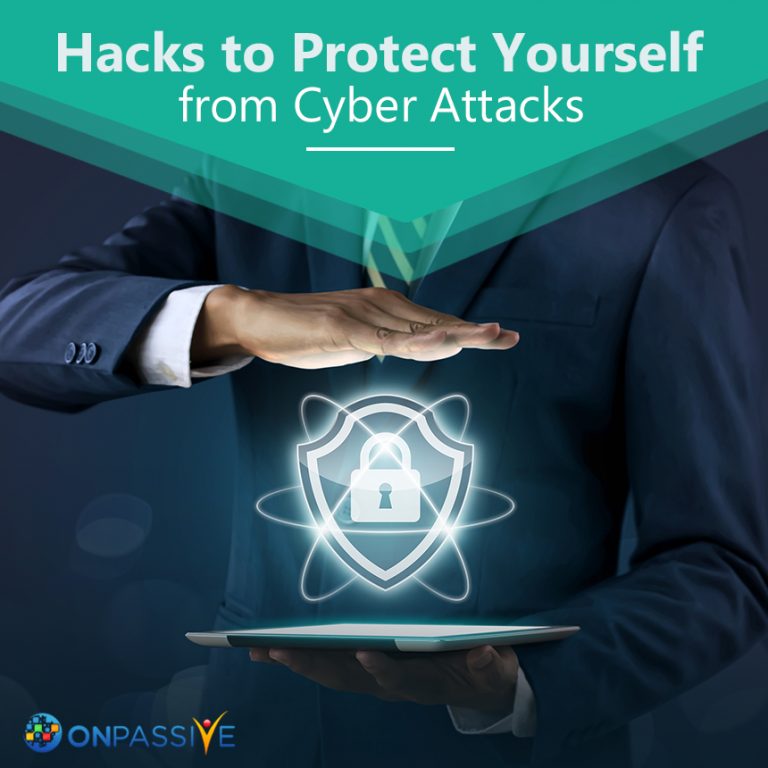
The internet has seen a considerable rise in its usage over the last decade. Thanks to smartphones and highly effective yet affordable computers. Cyberattacks, especially in the financial sector, not only cost the world economy nearly USD 2.7 billion in 2018, but it is also one of the most dreaded threats to national security in the US, with more than almost 164 million personal records being exposed in 2019, alone. And forecasts say that this amount will double by 2021.
Hence, if you don’t protect yourself and your organization from cybercrime, it’s only a matter of time before you’ll fall prey to an attack. The list of various kinds of cyberattacks grows as quickly as other parts of the ecommerce and technology sectors. With constant evolution, there is no set way to protect against them today, so that you can ensure it will still be an excellent way to do so in the future. With that, the most crucial factor to protect yourself and your business from cyberattacks are by staying up-to-date with the trends and threats in the ever-changing cybercrime space.
Cyberattacks come in various forms. Few target the human attack surface, which indicates the security gaps created by humans due to employee turnover, negligence, or human error. Other attacks target security loopholes in networks themselves. The safest option to protect yourself is to be aware of the various types of cyberattacks and to use that information to take measures to ensure your network’s security. Here are 4 types of cyberattacks currently having notable influences on cybercrime rates, and measures to protect you against them.
Phishing
Although this is not a new type of attack, phishing is still a popular way for cybercriminals to access information. Fortunately, the security from these cyberattacks rests in self-preservation and common sense. Most phishing attacks originate from emails that try to tempt users to click on an attachment or a link that is infected with malware that has the power to infiltrate the privacy of a given person’s personal computer and stored information to be applied for purchases or identity theft.
Spear phishing is a more targeted strategy and is usually more challenging to identify as something malicious. The safest bet to protect you is not to open any attachments or click on links from emails that aren’t from a trusted source. If you’re doubtful, at all, get in touch with the sender via any other means and confirm that all attachments and links are reliable and intended for you.
Trojan Malware
Named after the legendary horse disguised as a present and included a stomach full of soldiers, Trojan Malware cyberattacks are usually hidden programs hiding within a program that appears much more authentic. Although Trojan attacks don’t commonly cause as much immediate harm as malware attacks, they do so by intending to remain under the radar so they can make a given device more accessible for future attacks.
Updates in advanced security soft wares will scan for these “soft spots” created by Trojan viruses. But altogether bypass them, to protect yourself, you must be very careful while ensuring any new software you install on your device is safe and from a legitimate source.
Man-in-the-Middle (MitM)
Another widespread attack, MitM cyberattacks, intends to jump in between two parties during a financial activity or while sharing personal information and try to steal that particular information. These forms of cyberattacks are typical on public Wi-Fi; therefore, avoiding these types of financial transactions in public places is the best way to protect you against them. Nevertheless, they can also happen through devices that you might have believed were working on secure data, but wound up connecting to a public network. So ensure your phone does not have an “auto-connect” to any public networks can also be a brilliant move.
Ransomware
Ransomware is rather aptly named. It is one of the many cyberattacks that strive to find the information to “hold ransom” over the user until the user agrees to pay to recover their stolen information. These cyberattacks are generally focused on large corporations, but it’s not entirely unusual for them to target individuals. Even if you meet the ransom, there is no guarantee that the information stolen hasn’t been duplicated already.
Just like the other two attacks mentioned above, the most common way ransomware attacks find success via links included in emails. So to protect yourself beforehand against it is a much better scenario than having to be reactive. In addition to safe practices, regular updates of your software are paramount, as ransomware is a new and quickly emerging concern.
Stay Vigilant to Protect Your Business and Prevent Attacks
Cyberattacks aren’t going anywhere, so organizations and individuals must adopt a vigilant attitude. To protect yourself, you must educate your employees and maintain the quality of your anti-virus software and firewalls. With these measures taken, you will be taking the first steps towards safeguarding your business.
Final Thoughts
The primary theme in this article has been how to protect yourself and avoid attachments from unreliable senders. The secondary theme has been regularly updating software and personal knowledge about new trends in cyberattacks. By upholding these two practices, you can rest assured that your data is undamaged.



Patricio Rivers
4 years ago
Tancredo
4 years ago